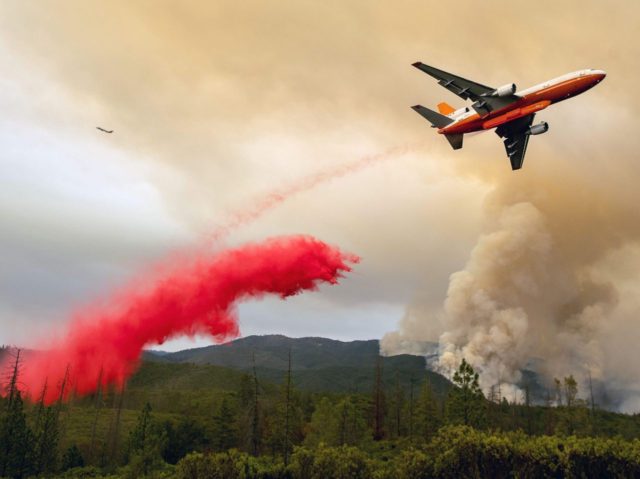How Federal Policies, Not Just Warmer Weather, Hav
Post# of 52101

< >

Data suggest that the number of U.S. wildfires has diminished, and the size of fires has increased, partly due to the federal government slashing the number of air tankers, and changing the way fires are fought — not just because of “climate change.”
Gov. Jerry Brown claimed at an August 1 press conference that California has already spent $125 million on wildfires this year and claimed that more recent research indicates that the situation will worsen as climate change becomes a “part of our ordinary experience,” according to National Public Radio.
A 2016 University of Wisconsin study by John T. Abatzoglou and A. Park Williams titled “Impact of anthropogenic climate change on wildfire across western US forests” acknowledged that “numerous factors aided the recent rise in fire activity” in western U.S. forests, but also claimed that “human-caused climate change caused over half of the documented increases in fuel aridity since the 1970s.”
WildfireToday.com reported that statistics from the U.S. National Interagency Fire Center reveal that 2017 set a new high in acres burned per wildfire, as well as setting the second-largest number of acres burned since accurate national data were first consolidated in 1990 for 49 states (Alaska is excluded because wilderness fires are allowed to burn).
While the linear trend line for the average size of wildfires increased from about 22 acres in 1990 to about 139 acres in 2017, the linear trend line for the average number of wildfires decreased from over 80,000 to less than about 70,000 since 1990.
WildfireToday.com acknowledges that warmer and drier weather make fires more difficult to suppress, but adds that important man-made factors exist that could be far more influential on wildfires.
These include: 1) 100 years of fire suppression making forests denser, for fires to burn with greater intensity; 2) fighting large fires less aggressively for safety reasons; 3) environmental demands to let fires burn naturally; and 4) initially responding with less equipment and personnel to fires.
The biggest man-made change in fighting wildfires appears to have been the U.S. Forest Service slashing the average number of large air tankers on exclusive use contracts by over 70 percent — from 44 in 2002 to 13 in 2018, according to the Fire Aviation website.
The decline began in 2002, when wings on two 50-plus-year-old military surplus air tankers snapped off in mid-air maneuvers, killing five aviators. Over the next decade, older aircraft were eliminated for safety reasons, and environmentalists battled to stop new contracts for air tankers to drop retardant on wildfires.
But with the average size of fires growing to over 135 acres in 2012, and several large wildfire incidents, the conservative National Review argued that “Obama Bureaucrats Are Fueling Wildfires” by continuing to slash the number of air tankers to nine for the 2013 fire season.
Rather than contracting with commercial air tanker fleets, President Barack Obama signed the “2014 National Defense Authorization Act” in December 2013 directing the Coast Guard to transfer seven HC-130H aircraft to the U.S. Forest Service, and funding the U.S. Air Force to spend up to $130 million to perform needed maintenance and convert the aircraft into the “next generation” of air tankers.
But in February 2018, with the $130 million spent and no permanent retardant delivery systems ever installed in any of the U.S. Forest Service’s HC-130H’s, the contract was cancelled by the Trump administration for budgetary reasons.
 (0)
(0) (0)
(0)